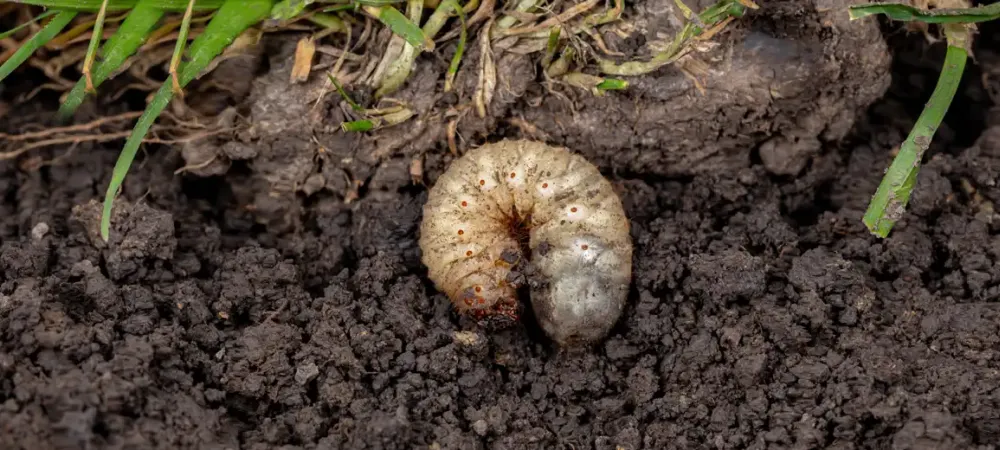Signs of Grubs on Your Lawn

Grubs are one of the most destructive lawn pests, feeding on grass roots and leaving behind widespread turf damage. Catching the signs early can help prevent long-term issues and restore your lawn’s health. Here’s what to look for and how to treat a grub problem effectively.
What Do Grubs Look Like?
Grubs are the larval stage of beetles like Japanese beetles and June bugs. They’re typically white or cream-colored, C-shaped, and range from ½ to 1 inch long. You’ll find them curled up in the soil just beneath the surface. If you pull up a small patch of turf and spot several of these larvae, it’s a good indication that grubs are active in your lawn.
What Does Grub Damage Look Like?
Grub damage often starts below the surface, so early symptoms can be easy to miss. As grubs feed on grassroots, you may notice sections of turf that feel soft or spongey. The grass may lift up easily, almost like a piece of carpet. Irregular brown patches are another common sign, especially in late summer and early fall. You might also see an increase in birds or wildlife digging up your lawn—animals like skunks and raccoons love feeding on grubs. Another giveaway is grass that wilts even after regular watering, as damaged roots can no longer absorb moisture properly.
Is It Grubs, Drought, or Fungus?
Grub damage can mimic other common lawn issues, so it’s easy to misdiagnose. Here’s how to tell them apart:
- Grubs: Grass lifts easily from the soil. You may see white, C-shaped larvae just below the surface. Often accompanied by animal digging.
- Drought stress: Turf appears dry but is still firmly rooted. Usually more uniform in shape and affects sunny areas first.
- Fungal disease: May present with circular patterns, spots on individual blades, or a powdery texture. Grass often feels slimy or damp in the morning.
If you’re unsure, try pulling back a section of turf. If it lifts without resistance and grubs are visible underneath, you’ve got your answer.
How to Get Rid of Grubs
Timing is everything. Many homeowners waste money on treatments that are either too early or far too late.
Preventative Treatment (Late Spring to Early Summer)
- Targets eggs and young grubs before they start feeding.
- Look for products containing chlorantraniliprole or imidacloprid.
- Water in after application to help it reach the root zone.
Curative Treatment (Late Summer to Early Fall)
- Ideal when you already see damage or find active grubs.
- Use carbaryl or trichlorfon for faster knockdown.
- Apply during the early morning or evening for best absorption.
Additional Tips:
- Aerate compacted soil—it encourages deeper root growth and disrupts grub habitats.
- Overseed thin areas to promote recovery.
- Avoid overwatering, especially in peak beetle-laying season.
Grubs aren’t just a cosmetic problem. Left alone, they can wipe out entire sections of lawn—and attract even bigger problems like moles and raccoons.
Book Professional Help Today
If you’ve noticed subtle changes in your lawn and aren’t sure what’s causing them, don’t brush it off. A closer look might reveal grubs as the hidden culprit. Early detection—and timely grub control—can make all the difference between a quick fix and a season-long recovery.
Want help assessing or treating your lawn for grubs? Reach out for a customized lawn health evaluation and grub control treatment plan that fits the season and your turf’s needs.
